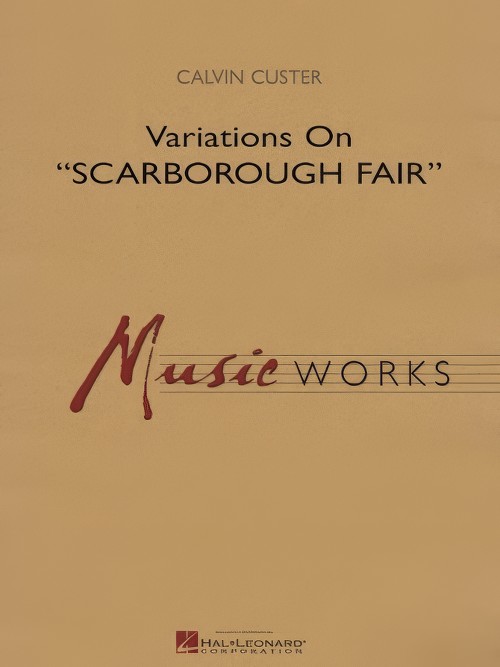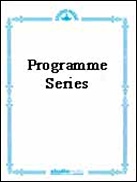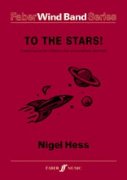Results
-
 £76.99
£76.99Scarborough Fair, Variations on (Concert Band - Score and parts) - Custer, Calvin
First published in 1989, this work from the late Calvin Custer epitomises his command of orchestration and understanding of musical pacing. The familiar folk melody is stated first by a solo flute then followed by a remarkable series of variations starting with a brass choir accompanied by woodwind flourishes. An Andante variation features the woodwind choir accompanying solos by baritone and oboe, and this leads to a striking fugue variation and bold finish. Truly symphonic band writing at its best.Duration: 4:45
Estimated dispatch 7-14 working days
-
 £76.99
£76.99Allein Gott in der Hh' sei Ehr (Concert Band - Score and Parts)
Jacob de Haan begins his arrangement of the well-known hymn Allein Gott in der H?h' sei Ehr (All Glory Be to God on High) with a quotation from his own Missa Katharina, a mass for choir, soprano, and band. To this melody he sets the Latin text from the last part of the Gloria. The chorale is then heard after an interlude and can, at the director's discretion, be accompanied by the choir singing in either German or English. A perfect work for church concerts. 0:03:20
Estimated dispatch 7-14 working days
-
 £84.99
£84.99Grace and Glory Wind Band Set (Score & Parts)
The chorale Glory to God on High is one of todays most often sung hymns. The words are an expression of praise to God and gratefulness for his mercy. The internationally familiar melody of this chorale forms the basis for Wim Stalman's Grace and Glory, in which the elements of praise and thanks are shown by means of both festive and more subdued melodies and harmonies. The choir parts allow the work to be performed by concert band with mixed choir. 0:04:53
Estimated dispatch 7-14 working days
-
 £49.50
£49.50Let There Be Peace On Earth
A beautiful arrangement of one of the most memorable melodies of all time that makes a wonderful concert piece for any middle school band. Starts out quietly featuring the woodwind section (and optional choir or audience sing-a-long) and then the brass takes over and builds to a big full sound. Great piece to combine choir and band as the finale of your concert. A great message in a great song! Inspiring and impressive!
Estimated dispatch 7-14 working days
-
 £84.99
£84.99So nimm denn meine H?'nde Wind Band Set (Score & Parts)
This celebrated song is based on a poem by Julie Hausmann (1826-1901), a Latvian teacher who was probably blind. The text draws on her personal experience and unshakeable faith in God, death and eternal life. The melody by Friedrich Silcher is written in a simple and delicate style but also draws on the grand romantic tradition of Wagner and Bruckner. This arrangement can also be performed with a mixed choir. The choir parts are in German. 0:05:30
Estimated dispatch 7-14 working days
-
 £87.95
£87.95SONGS OF THE BRITISH ISLES (Programme Concert Band) - Hingley, Barrie
A suite for band with optional choir (choir parts sold separately) which features well-known songs characterising England, Ireland, Scotland and Wales. There's even an optional bagpipes solo! Grade 4
Estimated dispatch 7-14 working days
-
 £59.40
£59.40The Star Spangled Banner - Swearingen, James
From the powerful opening statement to the full and glorious ending, this new and spectacular rendition of our national anthem will captivate your audience's attention right from the very start. A solid approach to scoring allows this creative setting to be highly suitable for all occasions. In addition, the optional parts for both full choir and organ make this arrangement of our nation's song a special choice for that district band and choir festival. Incredibly satisfying and strongly recommended!
Estimated dispatch 7-14 working days
-
 £95.00
£95.00To the Stars! (Concert Band - Score and Parts) - Hess, Nigel
The unusual combination of children's choir and symphonic wind band is wonderfully exciting, and To the Stars! provides an incomparable performing experience for both band and choir, and is also technically demanding and challenging. After a rousing introduction, we hear a countdown to our rocket's 'blast off', and suddenly we are heading out to the planets where we meet aliens with blue eyes and pink ears! After a brief but terrifying skirmish with a black hole we head off to a 'world of many wonders', and as we leave our solar system behind, the piece finishes with a spectacular shout of 'Fly with us - to the stars!'.Duration: 10.00
Estimated dispatch 7-14 working days
-
 £64.95
£64.95WHEREVER YOU ARE (Concert Band) - Mealor, Paul - Stubbs, Duncan
Commissioned by Gareth Malone for Series Four of BBC TV's 'The Choir' and first performed by Malone and The Military Wives Choir as part of The Royal British Legion's Festival of Remembrance at the Royal Albert Hall on 12 November 2011, in the presence of Her Majesty The Queen. The text is taken from poems, letters and prayers written by the Military Wives, selected and adapted by Paul Mealor, and a passage from the Book of John. Selling a staggering 556,000 copies in the week leading up to Christmas, more than the rest of the Top 12 combined, Wherever You Are became the UK's Official Christmas No. 1 of 2011. A brass band version is also available. A contribution from the sales of the sheet music will be donated to the two nominated charities: The Royal British Legion and SSAFA Forces Help.
Estimated dispatch 7-14 working days
-
 £75.24
£75.24Within These Hallowed Halls
For band with optional choir, strings, narrator and audience sing-a-long. This glorious setting of two of America's favorite hymns, "Amazing Grace" and "Battle Hymn of The Republic," is destined to be the work of choice when selecting that special number for your program's grand finale. Playable by band alone, this patriotic arrangement also offers the creative option of adding choir, strings, narrator, bagpiper and even a group sing-a-long. Musically appealing for bands of varied levels, this spectacular production number will offer grateful audiences, young and old alike, a wonderful opportunity to experience the ultimate in listening pleasure. A guaranteed winner!
Estimated dispatch 7-14 working days
